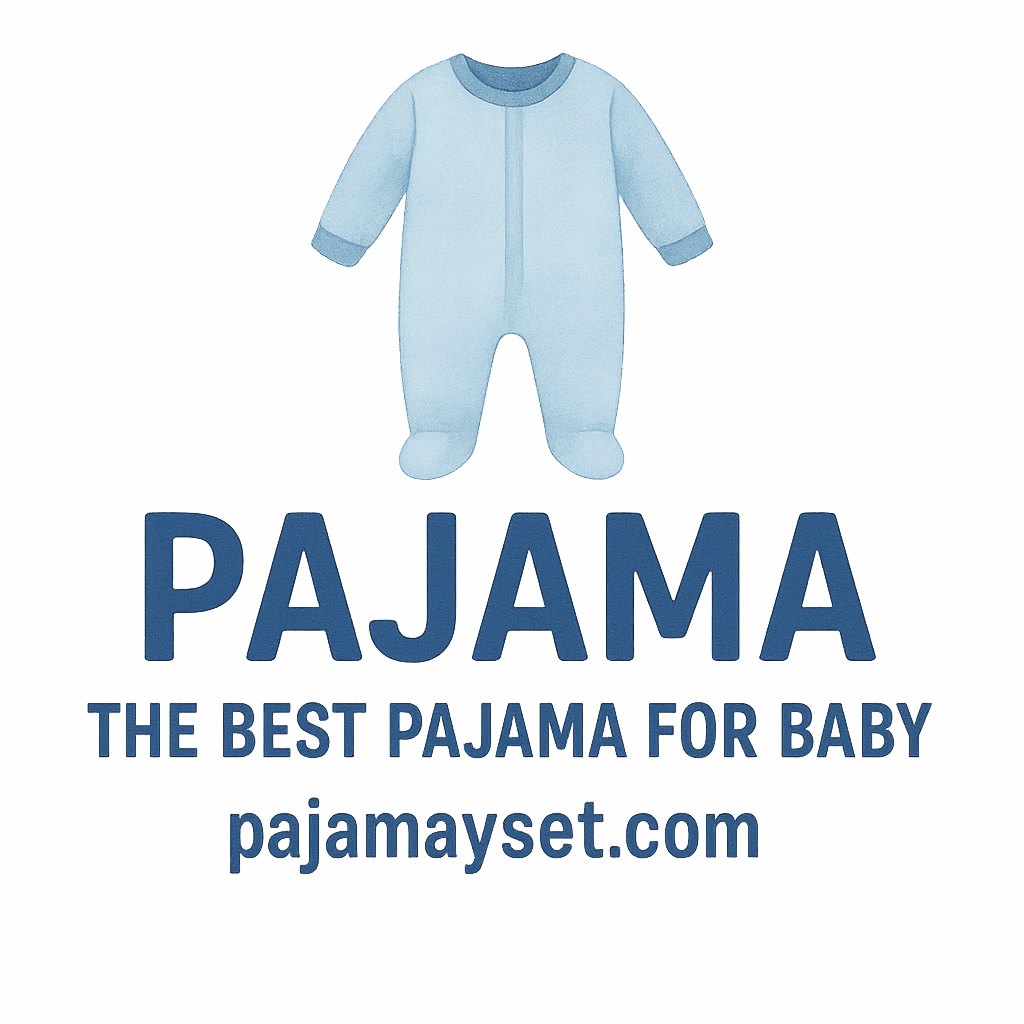Introduction
As the temperatures dip and the nights get colder, it’s important to ensure your baby stays cozy and comfortable while they sleep. Babies are more vulnerable to cold than adults because their bodies are still learning how to regulate temperature. Dressing your baby in the right pajama layers ensures they stay warm without the risk of overheating. But how can you be sure you’re dressing your baby just right for those chilly nights? Let’s dive into the best pajama layers to dress your baby for cold weather, so you can make sure your little one is always snug.
1. The Importance of Proper Pajama Layers for Babies
Layering is key when it comes to dressing babies for cold weather. Unlike adults, babies have a harder time keeping their body temperature regulated. Their skin is more sensitive, and they don’t have as much fat to insulate them. This makes it essential to dress your baby in a way that keeps them warm without being too hot.
How Pajama Layers Impact Comfort and Safety
Choosing the right pajama layers helps maintain a safe body temperature. Overheating can be just as dangerous as being too cold, as it can disrupt your baby’s sleep or even increase the risk of Sudden Infant Death Syndrome (SIDS). Finding the right balance between warmth and breathability is essential for safe sleep.
2. Understanding Baby’s Body Temperature Regulation
Babies have a harder time regulating their body temperature compared to adults. Because they are not as physically active during sleep, their bodies can cool down quickly, especially if the environment is cold. Properly layering your baby’s pajamas ensures that they stay warm without feeling too hot or uncomfortable.
Why Babies Need Extra Warmth at Night
Unlike adults, who can easily adjust their body temperature by tossing off blankets or shifting in bed, babies don’t have that ability. By layering their pajamas, you trap warmth close to their bodies while still allowing air circulation to keep them at a comfortable temperature.
3. Layer 1: The Base Layer – A Soft Cotton Pajama Set
The base layer is where you start. Cotton is the best option for the first layer, as it’s breathable, soft, and gentle on sensitive skin. Whether it’s a simple cotton pajama set or a onesie, this layer should be snug but not tight, providing comfort while allowing air to circulate.
Benefits of Cotton Pajamas for Babies
Cotton is hypoallergenic, making it an excellent choice for babies with sensitive skin. It’s also breathable, meaning it won’t trap too much heat, which is important for preventing overheating. For more details on pajama materials, check out our guide on Pajama Materials.
4. Layer 2: Adding a Sleeper for Extra Warmth
For colder nights, a sleeper is the perfect addition. A sleeper covers your baby’s body from neck to toe, ensuring they stay warm while still offering freedom of movement. Look for sleepers made of soft cotton, fleece, or blended fabrics that add extra warmth without causing discomfort.
Why a Sleeper is Ideal for Cold Nights
Sleepers are easy to put on and take off, making nighttime changes a breeze. Many sleepers come with feet covers, which prevent your baby’s feet from getting cold in the middle of the night. Plus, they are often designed with zippers, making it simple to change your baby’s diaper without fully undressing them. For some great options, visit our Buying Reviews.

5. Layer 3: Fleece Pajamas for Ultimate Warmth
Fleece is a game-changer when it comes to keeping your baby warm. It’s lightweight but incredibly effective at trapping heat. When the temperature really drops, fleece pajamas are a must-have to ensure your baby stays snug.
The Role of Fleece in Retaining Heat
Fleece traps heat close to your baby’s body while allowing for flexibility and comfort. It’s perfect for very cold nights, as it provides a cozy barrier against chilly air. For a wider variety of fleece options, visit Pajama Materials.
6. Layer 4: A Snuggly Sleep Sack or Wearable Blanket
A sleep sack or wearable blanket is a must-have in your baby’s nighttime wardrobe. These products are designed to keep your baby warm and safe while eliminating the risk of suffocation or entanglement, which can happen with traditional blankets.
How Sleep Sacks Keep Baby Safe and Warm
Sleep sacks keep your baby warm while allowing them to move freely. Unlike regular blankets, sleep sacks stay securely in place throughout the night. If you’re considering one for your baby, check out our recommendations for sleep sacks in our Baby Safety section.
7. Layer 5: Pajama Set with Built-In Mittens and Booties
For extra protection against the cold, look for pajamas with built-in mittens and booties. These are especially useful for keeping your baby’s hands and feet warm, which are often the first parts of their body to get cold.
Protecting Baby’s Hands and Feet from the Cold
Hands and feet lose heat quickly, which can make it harder for your baby to stay warm. Built-in mittens and booties offer a practical solution, keeping their extremities warm and cozy. For more information on these features, check out our guide on Baby Safety.
8. Layer 6: Using Thermal Pajamas for Extra Warmth
Thermal pajamas are a great choice for very cold nights. The thick, insulating fabric traps heat while still being breathable enough for your baby to sleep comfortably. They are made from cotton blends that add warmth without excess bulk.
When to Choose Thermal Pajamas
Thermal pajamas are great for extreme cold weather or if your home tends to be a bit chillier. They’re perfect for keeping your little one warm while allowing them to move freely. Learn more about different fabric options in our article on Pajama Materials.
9. Layer 7: Adding a Hat for Baby’s Head
Keeping your baby’s head warm is essential, as babies lose a lot of heat through their heads. A soft cotton or wool hat can be the final touch to ensure they stay warm during cold nights.
Why Babies Need a Warm Head for Good Sleep
A warm head helps regulate the body’s temperature, ensuring that your baby stays cozy without overheating. Choose a soft, breathable hat that will not irritate your baby’s skin. For more tips, visit our section on Pajama Materials.
10. Layer 8: Dressing Baby in a Pajama with Zipper Closure
Zipper pajamas are an excellent choice for parents who want a fast and convenient way to change their baby in the middle of the night. Zippers make it easy to dress and undress your baby, ensuring that you can make quick diaper changes without disturbing their sleep too much.
The Convenience of Zippers for Nighttime Changes
Zippers also keep the pajamas in place, preventing them from shifting or coming undone during the night. When looking for zippers, opt for smooth, non-abrasive designs that won’t cause discomfort to your baby. For more info, explore our collection of Pajama Materials.
11. Layer 9: Custom Pajama Sets for Baby’s Unique Needs
Every baby has different needs when it comes to comfort. Custom pajama sets allow you to choose the right fabrics, designs, and features that work best for your baby’s unique needs. Whether you’re looking for hypoallergenic fabrics or extra warmth, custom pajamas can be tailored just for them.
How to Customize Your Baby’s Pajamas for Comfort
Custom pajamas may include specific features like adjustable cuffs, extra padding, or fabrics that are gentle on sensitive skin. Learn more about customizing pajamas in our Style & Design section.
12. Layer 10: Breathable Pajamas for Cold Nights
While it’s important to keep your baby warm, it’s just as important to ensure their pajamas are breathable. Pajamas made from breathable fabrics like cotton or bamboo help regulate your baby’s body temperature while still keeping them cozy and warm.
Ensuring Baby Stays Warm Yet Comfortable
Breathable fabrics prevent overheating by allowing moisture and heat to escape, keeping your baby comfortable. Check out our full guide on Pajama Materials for the best options for breathable fabrics.
Conclusion
Dressing your baby for cold nights doesn’t have to be a challenge. By layering the right pajamas, you can ensure that your little one stays warm, comfortable, and safe through the night. Whether it’s adding a soft cotton base layer or using a cozy fleece sleeper, these 10 pajama layers provide a great starting point for keeping your baby comfortable during cold weather. Remember, always consider the temperature of the room, your baby’s comfort level, and the fabrics that work best for their skin.
FAQs
- What’s the best fabric for baby pajamas in cold weather?
Fleece and thermal cotton are ideal fabrics for colder nights. They are insulating yet breathable to ensure your baby stays warm but not overheated. - Should I use blankets or sleep sacks for my baby?
Sleep sacks are safer than blankets, as they prevent suffocation and keep your baby cozy throughout the night. - How many layers should I dress my baby in during cold nights?
Typically, 3-5 layers are sufficient, depending on the temperature. Always monitor your baby’s comfort and adjust layers as needed. - Can I use wool for baby pajamas?
Wool can be a great option for warmth, but it’s essential to ensure it’s soft and comfortable to avoid irritation. - What should I do if my baby gets too hot during the night?
Remove one or two layers or adjust the room temperature to keep your baby comfortable and prevent overheating. - Is it safe to dress my baby in thermal pajamas?
Yes, thermal pajamas are safe as long as they’re made from breathable fabrics and are not too tight. - Can I customize my baby’s pajamas?
Yes, many companies offer customizable pajamas to cater to your baby’s unique needs, such as special fabrics or design features.


